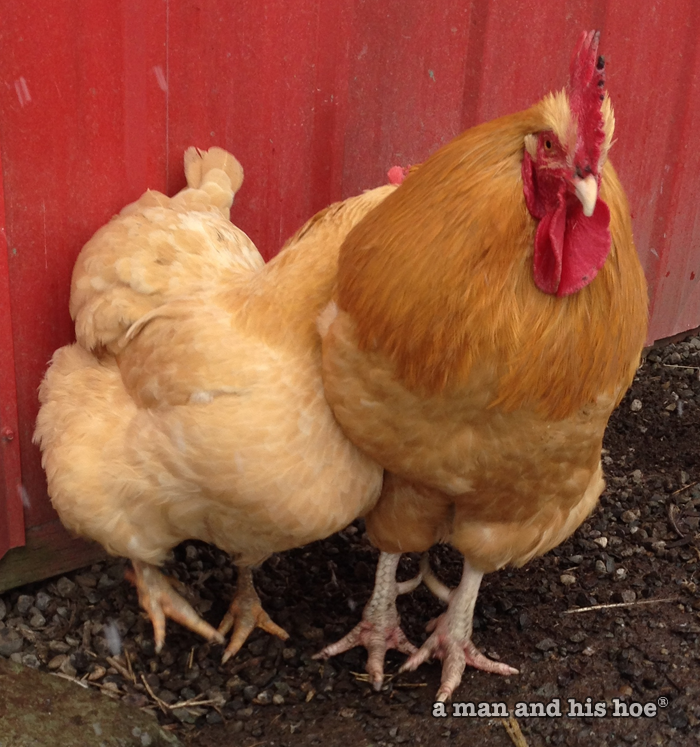
Five year old Billy and one of the hens who like him. Hens have their favorite roosters, and Billy is well liked for being a kind rooster. The oldest rooster at a man and his hoe®, he has the longest spurs of any of the roosters. Watch the roosters and hens for an extended period of time, and you come away with an appreciation for the intricacies of chicken life. Give them the space they need to live they way they want to, and you realize how absurd it is to cage these animals, or crowd them together by the tens of thousands.
Category: About My Chickens
-
Chicken Love
-
Snow Day
We woke up to five inches of fluffy snow. Not the chickens favorite weather. Fortunately, the forecast is for much warmer weather tomorrow and the rest of the week, so the snow will be gone soon.
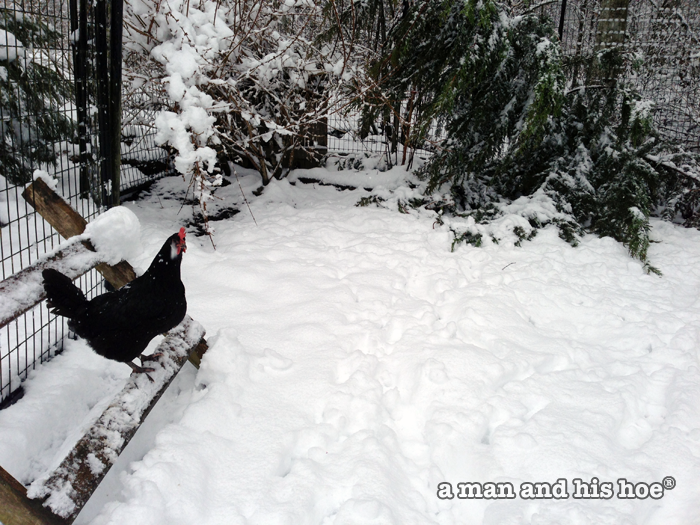
When it’s cold and snowy outside, the best place for a young chicken is to huddle next to its mother. And the Black Bresse hen in the red barn, isn’t sure whether to venture outside.
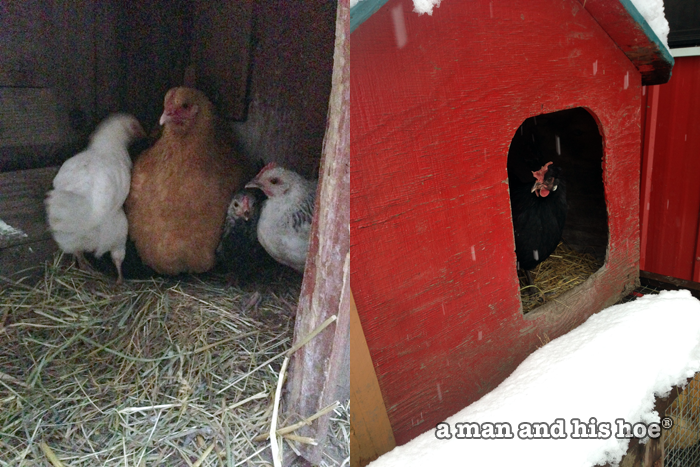
But the snow doesn’t deter Spikey. She likes to lay her eggs in one of the doghouses. She’ll even chase the dogs out of the doghouse if she has to. She is one of three hens who lay their eggs in the doghouses. Some days we get all three eggs before the dogs do. Other days the dogs get all the eggs. Life is hard.
If ten years ago, someone would have told me that I would be rushing to get just-laid, warm eggs out of a doghouse before the dogs got to them, I would have told them they were nuts. It makes you wonder what I or you will be doing ten years from now. Life is like rafting down a river. You never know what is around the corner. You might as well enjoy the ride.
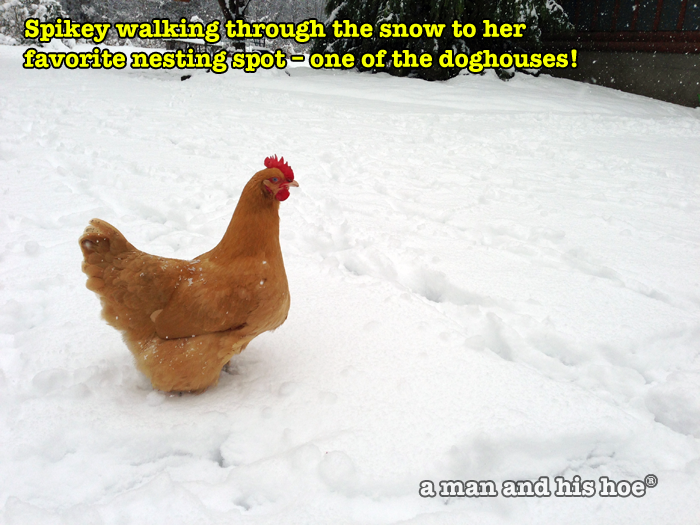
-
Growing Up Is Hard

Life is full of challenges. Things are always changing. Nothing stays the same. And it’s as true for chicks as it is for us. The Milky Way galaxy we live in is moving at some 1,350,000 miles an hour through the universe. Every day we travel some 32 million miles. From the moment we are born until we die, we are never in the same space, traveling through space at incredible, unimaginable speed. All of us, even the chickens. At times it may seem like nothing changes, but every hour of every day hour we travel more than a million miles. At that speed we could buzz around the earth more than 50 times in an hour. So the next time you are in a difficult situation, close your eyes and remember that in an hour you’ll be more than a million miles away from where you are now.
Yesterday evening was a traumatic time for these chicks. Their mother decided it’s time to start roosting again after sleeping with her chicks in a small barn for the last two months. Two of her chicks followed her up to the roost. But the other two couldn’t understand why she wasn’t in their bed. So they spent the night huddled together, wondering where their mother had gone.
Today, they are all together, following her around through the pasture and woods. Maybe tonight, they will all figure out that their mother is roosting with the other grownup chickens and join her and the other chicks on the roost.
It won’t be long before they have an even more traumatic experience, when their mother decides that her mothering time is over and shoos them away when they want to follow her around.
Broiler raised chickens never have to face this ordeal of growing up. Broiler and most farmed chicken never have a mother to contend with. So they never have to confront separation anxiety. Then again, most farmed chicken, broiler-free range-pastured never live this long.
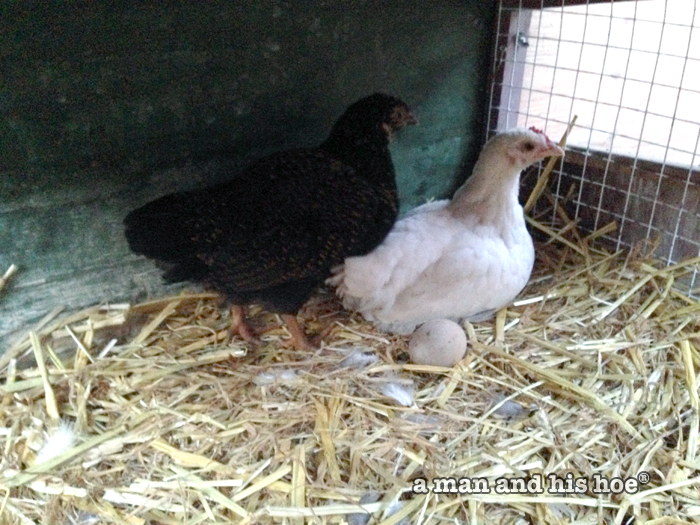
Note: The egg you see under the chicks is a wooden egg. I keep wooden eggs in the nests I want the hens to use, to encourage them to lay there. Hens prefer to lay eggs in nests where there are other eggs. -
Surprises Every Day
When you let your chickens run free, you never know what they will do or where they will go. A few days ago I heard a rattling in the shed we use to store hay and straw, and where our wonderful UPS driver picks up and leaves packages. When we have an outgoing package, we put the package in the shed and leave the doors open for the UPS driver. Our regular UPS driver then closes the door when he picks up the package.
What he didn’t realize is that one of our hens had jumped up into the shed earlier and was quietly sitting on a bale of hay in the corner. He closed the door, trapping her inside, and I was hearing her trying to get out later a few hours later.
Now we leave the shed door open so she can lay an egg where she wants to. These are pictures of the shed, Yuki-hime on the bale of hay, and the egg she laid today.
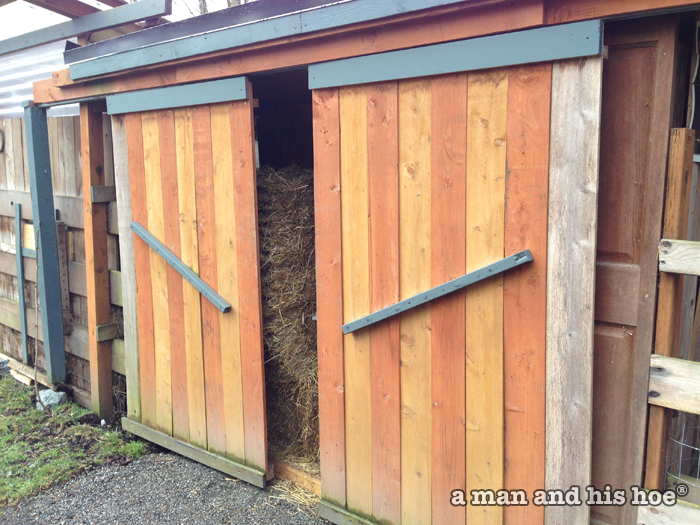
Hay and Straw Shed 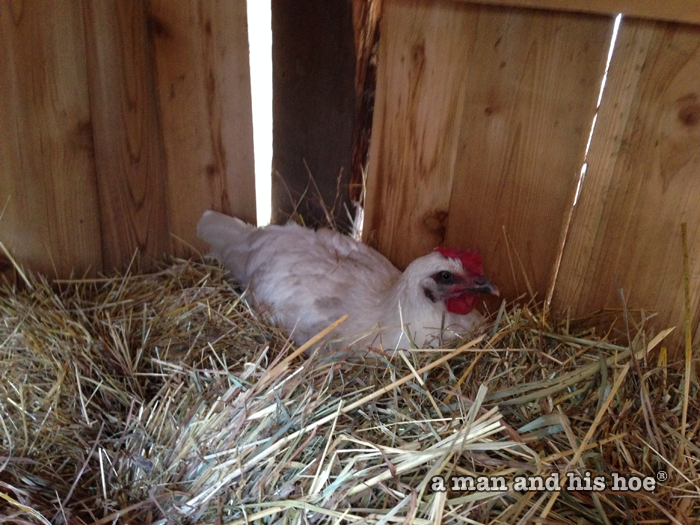
Yuki-Hime in the shed. 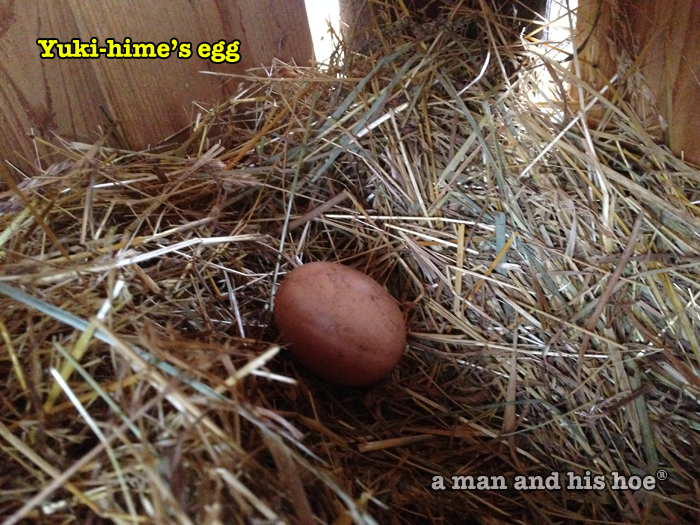
Yuki-hime’s Egg And below is a photo of a two and a half month old daughter with her mother. The mother is laying eggs again and is checking out the elevated dog house used by other hens for laying eggs. An older chick, she still spends much of the day with her mother, and roosts with her at night. Even with their tiny brains, chicks display a need to be with their mothers, even when they are well able to be on their own.

2 ½ month old daughter with her mother. Which brings to mind this article by Nicholas Kristof, Is That Sausage Worth This, where he describes the dreadful conditions under which most pigs are raised. One has to question the sanity of modern farm industrialists who treat animals as if they are just machines. Spend time with any farm animal, be it a cow, a pig, or a chicken, and you realize that they are full of emotions. As youngsters they love to play. Even little chicks play with each other and with their mothers.
The drive to raise these animals as cheaply and as quickly as possible is making farmers to act as monsters. And all of us who go along consuming these products without thinking are their unwitting accomplices. The next time you go shopping for chicken, ask your grocer, “Was this chicken raised by its mother?” Does it matter? Did it matter to you that you were raised by your mother?
-
Never Enough Nests?

Two hens wanting the same nest It’s not that there aren’t enough nests, it’s that hens want to use the same nest. Some days I’ll go to the coop to check out what all the cackling is about, only to see one hen on a nest, five empty nests nearby, and another hen expressing her frustration that the nest she wants to use is occupied.
By mid afternoon, the more favorite nests can have many eggs. It’s not always possible to tell which hen laid which egg, but by observing throughout the day which hens are using a particular nest, it’s possible to figure out the hen which laid a specific egg by the color and shape of the egg.
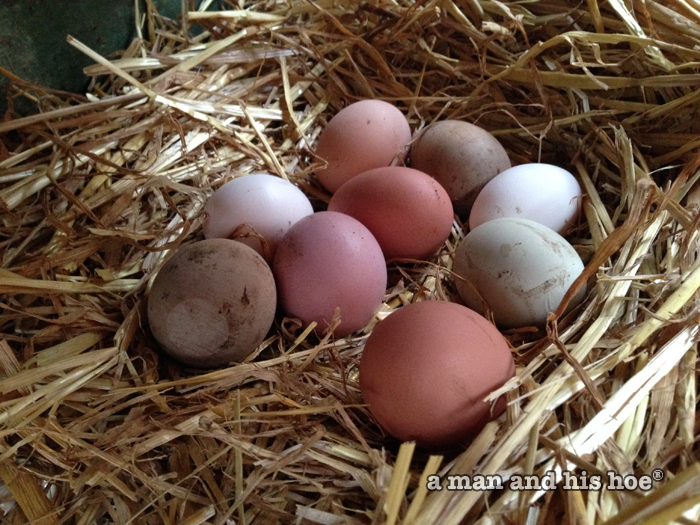
Nest full of eggs